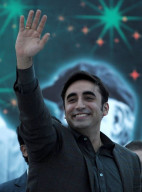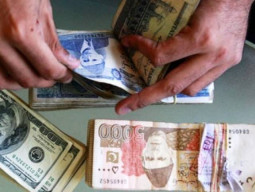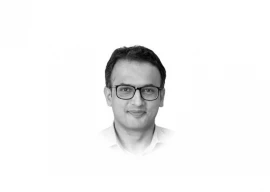
Bilawal Bhutto’s visit to Multan got many people excited about the future of the Pakistan People’s Party. It was a moving sight to see old women welcoming Benazir Bhutto’s son with such love. However, this is too early to determine whether the party will come back to life, especially in south Punjab where it supposedly had a lot of traction, at least before the 2013 elections.
The older generation, particularly the women that were there that day, must have been moved by the memory of Bilawal’s late mother who had tremendous capacity to connect with the people. This is not just about politics but the human touch. Also, a number of those present that day were indebted due to benefits of the Benazir Income Support Programme. Those that came from flood-affected areas also expected financial and other assistance. Not to mention the fact that the gathering was in former Prime Minister Yousaf Raza Gilani’s constituency, who has both personal and party following. Even Mr Gilani’s political opponents appreciate him for the unprecedented development work in Multan.
However, a day in Multan may not be sufficient to capture the challenges that lie ahead. It is a fact that over years the PPP and Yousaf Raza Gilani’s support base has shifted from urban to rural areas in Multan. While urban areas in south Punjab, like the rest of Punjab, respond better to ideology and party politics, rural areas operate better on the basis of power groupings. Since a large segment of south Punjab is still rural, the PPP could hope to get back into action by re-building its power network. But the problem with such coalitions is that they respond to parties which appear to be in better favour with the permanent establishment. The potential partners smell it in the air as to who is more likely to win and thus make their choices. This is one of the reasons that the PPP lost in south Punjab in 2013.
Here is, however, an additional challenge for the party. Although the potential coalition partners that are the big landowners and other groups continue to wield influence, people are not likely to vote for anyone who does not deliver. There is something basic which has changed in the last four to five years. Talk to people in backward districts like Dera Ghazi Khan and Rajanpur and you can get the sense that the big names do not have an easy ride at all. We hate to give credit to people but they do make active choices. The PPP had partly suffered in south Punjab because of their lacklustre performance and the popular perception that its politicians had delivered less than what they devoured in terms of public funds.
A PPP getting ready to contest in south Punjab will find out that the next elections will be a contest between itself and the PTI, and not the PML-N. Be it the role of the media or publicity against the ruling party, the fact is that they have lost the initiative in a lot of regions, including south Punjab. A Metro Bus or a road in Multan may not do the job.
But this is also where the challenge lies for young Bilawal of finding a message that attracts people back to the PPP. In his recorded message to people from this sub-region, he talked about the loot and plunder of takht Lahore, probably forgetting that the ruling coalition from central Punjab may also have carried the burden of financial mismanagement of the last five years of the PPP government as well. People might not have forgotten that. Furthermore, we may politically disagree with Imran Khan’s tactics and find him over-ambitious, but it is also a fact that he has totally raised the expectations of people vis-à-vis the state and political leadership. Some of the ordinary people may disagree with Imran’s idea of forcing out a government, however, there is lesser disagreement with what Imran is saying. The sound of accountability and facilitating public not the elite is something that rings a bell in people’s mind. Bilawal’s message and speech that day lacked a purpose. It was based on emotions but no signs of how could he offer people more than what Imran has already done.
Bilawal Bhutto has to use magic which means say something that gives ordinary people hope, especially the youth. One of the cards he could use in case of south Punjab pertains to the issue of a new province. In fact, many of the women standing there for him that day were calling for a ‘Seraiki’ province. He did mention south Punjab which many consider not the same as ‘Seraiki suba’. This is because the new poor in south Punjab are Seraiki who need attention.
Let’s put aside nomenclature for a minute, the party’s main hope in the region lies in actively pursuing the idea, which may not get support from the strong north and central Punjabi influence in his party. When Farooq Laghari, then with the PPP, had raised the issue of south Punjab province in Benazir Bhutto’s first term as prime minister, the idea met with a lot of opposition from within. Benazir Bhutto was one of the few people who supported the idea. In doing so she had visibly walked away from her own father Zulfikar Ali Bhutto’s compromise with the Punjabi establishment on the issue of restoring Bahawalpur province in the 1970s, which at that time symbolised a call for Seraiki identity. The last PPP government did raise the issue again but now Bilawal and his party will have to take a clearer position on the issue, especially when the Sindh faction of his party may be equally scared of the idea of a new province.
Pakistan is undergoing change. People are restless and prone to militancy. Unless the PPP can demonstrate its capacity to utter and fulfil a new vision and not just constantly harp on sacrifices, it has little to gain. From religious militants to political militants, there are a lot of new brokers to capture people’s imagination.
Published in The Express Tribune, September 25th, 2014.
Like Opinion & Editorial on Facebook, follow @ETOpEd on Twitter to receive all updates on all our daily pieces.
COMMENTS (9)
Comments are moderated and generally will be posted if they are on-topic and not abusive.
For more information, please see our Comments FAQ
















































@chachoo....homogeneous punjab???? i think you have never traveled through out punjab or ur mean for Punjab is LHR,Pindi,Gujranwala.Faisalabad etc.......................... ethenicity is defined from its language,area,culture,and social values...this is an undeniable fact these all r different between the upper and south punjab to confirm this u should travel and see....history witnessed it was Bahawalpur state's assets which provided back support for the economy of nascent country.in 1947..if people r genetically same then why so much alienation and divide, why the whole area of south had been deprived and suppressed since partition....currently honestly speaking people of the SP are the most deprived masses in pak than Pathan, punjabi. Baloch and sindhi and urdu speaking....tell me how many people are from SP in the current cabinet either federal or provincial ??? how many Matro types projects has been initiated ??? how many universities and Medical colleges and hospitals???? how many funds allocated form the provincial and central government after 18th amendment??? if got how much spent and how much lapsed or went back to Lahore on CM discretion????...brother in actual sense they r the second class citizens of punjab and pakistan...people are fed up with PPP and PMLN(Takht e Lahore)...more provinces are panacea for all worries of pakistan....don't worry dividing pujnab mean dividing Pakistan...Pakistan will remain intact and will be more strong than ever...Saraikistan zindabad ...Pakistan Paindabad....
@Saraikistan: PPP banked on the same politics of hatred that you are mentioning it now and look what happened to them in South Punjab. People are fed up of this type of politics. So kindly grow up. People love Inclusion rather than Exclusion. Assimilation is better than any other thing.People of Punjab dont want the same Polarization what they are witnessing among Urdu and Sindhi speakers in Sindh.
Also one language or Dielect ( in my view ) do not make a separate ethnicity. Ethnicity is not dependent on a mere language only. Kindly define that what makes a Seraiki ethnicity different from Punjabi ethnicity. There ancestry is different than the other residents of Punjab?. They are genetically different?. Culturally different?. Eating patterns are different or what?. Their clothing is different than the others? Racially they are different? They never intermarry among each other or what?. Who is more indigenous than others?. The Ethnicity definition in a much Pluralistic society and at the same time Homogeneous Punjab is difficult to define. Politics of Dividing people will die out in the future and more inclusive politics will be welcomed by the people everywhere.
It was a stage managed event.Do not read much in it.
writer has rightly pointed out the challenges of B Bhutto...people of South Punjab(SP) are fed up with PPP politics of saraiki province and recent statement of AZ against provinces hurt the feelings of Saraiki Nation...apart from Gillani and his PPP supporters,People of SP are now are supporting PTI due their anti Takht e Lahor and anti Punjab sentiments....People of SP were never ever the part of Punjab(as bahawalpur was a separate state even after partition and Multan till Muzafar sadozai,1818).@chachoo is very right in his comment that "All people in South Punjab almost looks like same, they eat the same food and they have the same traditions."..Saraiki language is very different from Punjabi, i challenge to even punjabi linguistic experts to understand the only single complete "kafi" of Hazart Khawaja Ghulam Fareed. it will be better to timely split the punjab otherwise the gap between common man is widening day by day.....
Wishful thinking of a dying party, echoed by a me-too scholar!
PPP is on the way out even in Sindh, where I visit regularly. They have not been delivering to the people of Sindh and come election time and with right strategy PTI can easily put a dent in their comfort zone as well.
In Punjab, PPP has now joined PML-N and lost whatever ground they had.
Adios and good riddance.
PPP is a complete flunky political party, and it's finished in Punjab, and now the MQM will finish PPP in Sindh by dividing it on ethnic lines. PPP is game over !
Madam you seems to be disconnected with the reality of South Punjab. Also So called Seraiki identity is not some ethnicity but a mere language that is mutually intelligible with other dialects of Punjabi. Infact many people could not differentiate in many dialects of Central Punjab and Seraiki language in many regions. Our Urban Intellectuals should realize that some language does not make one definite ethnicity and identity. All people in South Punjab almost looks like same, they eat the same food and they have the same traditions. Also Intermarriage among all the residents is a common trend unlike like Sindh where negligible Sindhis ever marry any Urdu speaker. All in all the Politics of Division by PPP in Punjab weather South, Central or North will not work. People want general issues to be discussed for the next elections. In my view it will be PTI vs PMLN everywhere in Punjab while PPPP could not manage any majority in the future as well.
Mohtarma had a knack for connecting with the common people. She had a greater knack for connecting with the national treasury. She connected to the tune of $1.5 billion. And a $ 300,000 necklace that had to be kept in a Swiss bank. Not to be outdone, Mr.10% racked up $2.3 billion. It was so touching, to see the 'Dehati Aurats' [Sharif's words] shower Baby Bhutto With love and rose petals. Only because they might have missed his latest rant :- About taking back every inch of Indian Kashmir. The uproar, and laughing has barely died down. The esteemed author is severely mistaken, Baby Bhutto is far from ready. He can't even walk.